Milwaukee, Wisconsin Blood Testing Facilities
 Represents a LabCorp blood testing facility
Represents a LabCorp blood testing facility Represents a Quest Diagnostics blood testing facility
Represents a Quest Diagnostics blood testing facility
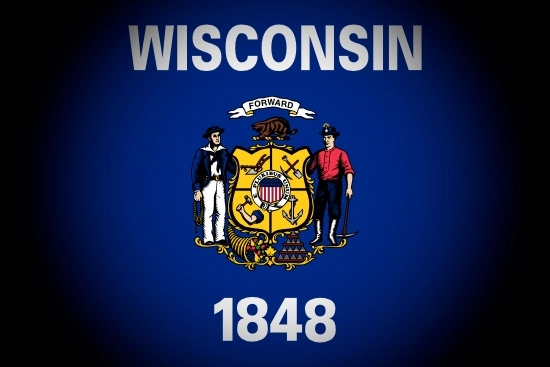
Nearby Labcorp Blood Testing facilities:
- Labcorp Center Distance: 2 m, 1502 S. Layton Blvd, Milwaukee, Milwaukee County, WI, 53215
- Labcorp Center Distance: 4 m, 5631 W Lincoln Ave, West Allis, Milwaukee County, WI, 53219
- Labcorp Center Distance: 5 m, 5434 W Capitol Dr, Milwaukee, Milwaukee County, WI, 53216
- Labcorp Center Distance: 6 m, 8500 W Capitol Suite 201B, Milwaukee, Milwaukee County, WI, 53222
- Labcorp Center Distance: 7 m, 2645 N Mayfair Rd Suite 110, Milwaukee, Milwaukee County, WI, 53226
- Labcorp Center Distance: 8 m, 3040 N 117Th St 210, Wauwatosa, Milwaukee County, WI, 53226
- Labcorp Center Distance: 9 m, 12555 W National Ave, New Berlin, Waukesha County, WI, 53151
- Labcorp Center Distance: 13 m, 136 N Main St Suite 309, Thiensville, Ozaukee County, WI, 53092
- Labcorp Center Distance: 32 m, 6530 Sheridan Road, Kenosha, Kenosha County, WI, 53143
- Labcorp Center Distance: 47 m, 35 Tower Ct Ste E, Gurnee, Lake County, IL, 60031
- Labcorp Center Distance: 59 m, 5911 Northwest Highway Ste 108, Crystal Lake, McHenry County, IL, 60014
- Labcorp Center Distance: 65 m, 2601 Compass Rd Suite 135, Glenview Nas, Cook County, IL, 60026
- Labcorp Center Distance: 66 m, 121 South Wilke Rd 405, Arlington Heights, Cook County, IL, 60005
- Labcorp Center Distance: 68 m, 2338 Higgins Rd, Hoffman Estates, Cook County, IL, 60195
- Labcorp Center Distance: 69 m, 1710 N Randall Road Ste 240, Elgin, Kane County, IL, 60123
- Labcorp Center Distance: 71 m, 450 Dundee Ave, Elgin, Kane County, IL, 60120
- Labcorp Center Distance: 72 m, 3402 Kinsman Blvd, Madison, Dane County, WI, 53704
- Labcorp Center Distance: 80 m, 233 E Erie St Ste 602, Chicago, Cook County, IL, 60611
- Labcorp Center Distance: 81 m, 111 N. Wabash Avenue Ste 1710, Chicago, Cook County, IL, 60602
- Labcorp Center Distance: 83 m, 725 W Fabayan Parkway Suite D, Batavia, Kane County, IL, 60510
- Labcorp Center Distance: 85 m, 522 W Chestnut Street, Hinsdale, Dupage County, IL, 60521
- Labcorp Center Distance: 86 m, 1020 E Ogden Ave Ste 208, Naperville, Dupage County, IL, 60563
- Labcorp Center Distance: 92 m, 2272 W 95Th Street Ste 100, Naperville, Will County, IL, 60564
- Labcorp Center Distance: 99 m, 16325 Harlem Ave Ste 110, Tinley Park, Cook County, IL, 60477
Nearby Quest Blood Testing facilities:
- Quest Center Distance: 5 m, 4852 S 6Th St, Milwaukee, Milwaukee County, WI, 53221-2462
- Quest Center Distance: 7 m, 2600 N Mayfair Rd, Wauwatosa, Milwaukee County, WI, 53226-1309
- Quest Center Distance: 32 m, 10117 74Th St, Kenosha, Kenosha County, WI, 53142-7533
- Quest Center Distance: 43 m, 1854 E Grand Ave, Lindenhurst, Lake County, IL, 60046-7821
- Quest Center Distance: 46 m, 15 Tower Ct, Gurnee, Lake County, IL, 60031-5708
- Quest Center Distance: 55 m, 565 Lakeview Pkwy, Vernon Hills, Lake County, IL, 60061-1839
- Quest Center Distance: 59 m, 260 E Congress Pkwy, Crystal Lake, McHenry County, IL, 60014-6235
- Quest Center Distance: 60 m, 22285 Pepper Rd, Barrington, Lake County, IL, 60010-2538
- Quest Center Distance: 63 m, 337 W Northwest Hwy, Palatine, Cook County, IL, 60067-2414
- Quest Center Distance: 65 m, 2551 Compass Rd, Glenview, Cook County, IL, 60026-8042
- Quest Center Distance: 67 m, 1100 W Central Rd, Arlington Heights, Cook County, IL, 60005-2402
- Quest Center Distance: 68 m, 4709 W Golf, Skokie, Cook County, IL, 60076-1258
- Quest Center Distance: 69 m, 808 E Woodfield Rd, Schaumburg, Cook County, IL, 60173-4714
- Quest Center Distance: 70 m, 800 Austin St, Evanston, Cook County, IL, 60202-3439
- Quest Center Distance: 72 m, 4801 W Peterson Ave, Chicago, Cook County, IL, 60646-5725
- Quest Center Distance: 74 m, 5901 E Riverside Blvd, Rockford, Winnebago County, IL, 61114-4935
- Quest Center Distance: 75 m, 4126 N Milwaukee Ave, Chicago, Cook County, IL, 60641-1860
- Quest Center Distance: 76 m, 641 Highgrove Pl, Rockford, Winnebago County, IL, 61108-2506
- Quest Center Distance: 77 m, 2800 N Sheridan Rd, Chicago, Cook County, IL, 60657-6118
- Quest Center Distance: 78 m, 340 E North Ave, Lombard, Dupage County, IL, 60148-1303
- Quest Center Distance: 79 m, 1460 N Halsted St, Chicago, Cook County, IL, 60642-2605
- Quest Center Distance: 80 m, 610 S Maple Ave, Oak Park, Cook County, IL, 60304-1091
- Quest Center Distance: 81 m, 111 N Wabash Ave, Chicago, Cook County, IL, 60602-3063
- Quest Center Distance: 82 m, 2631 Williamsburg Ave, Geneva, Kane County, IL, 60134-1111
- Quest Center Distance: 83 m, 433 Seminole Rd, Muskegon, Muskegon County, MI, 49444-3743
- Quest Center Distance: 84 m, 1180 W Wilson St, Batavia, Kane County, IL, 60510-7693
- Quest Center Distance: 85 m, 534 Chestnut St, Hinsdale, Dupage County, IL, 60521-3175
- Quest Center Distance: 87 m, 1113 Fairview Ave, Westmont, Dupage County, IL, 60559-2709
- Quest Center Distance: 88 m, 640 S Washington St, Naperville, Dupage County, IL, 60540-6693
- Quest Center Distance: 89 m, 7530 Woodward Ave, Woodridge, Dupage County, IL, 60517-3100
- Quest Center Distance: 91 m, 8751 S Greenwood Ave, Chicago, Cook County, IL, 60619-7018
- Quest Center Distance: 92 m, 484 W Boughton Rd, Bolingbrook, Will County, IL, 60440-2398
- Quest Center Distance: 93 m, 10837 S Cicero Ave, Oak Lawn, Cook County, IL, 60453-6458
- Quest Center Distance: 97 m, 24600 W 127Th St, Plainfield, Will County, IL, 60585-9507
- Quest Center Distance: 98 m, 2500 Niles Rd, Saint Joseph, Berrien County, MI, 49085-3272
- Quest Center Distance: 99 m, 1100 W Veterans Pkwy, Yorkville, Kendall County, IL, 60560-4728
Milwaukee Hormone Replacement Therapy Services
Hormone Restoration and Optimization is one of the keys to living a long and healthy life. The human body thrives when Hormone Levels are balanced, and this allows men and women to feel and look their best while combatting the effects of the aging process. The Conscious Evolution Institute is a Board Certified and Licensed Hormone Clinic that specializes in treatments designed to help patients of both sexes thirty years and older experience the amazing benefits of Hormone Balance.
Our clinic proudly serves the Milwaukee metropolitan area, as well as the entire state of Wisconsin. We have affiliate physicians located all throughout the greater Milwaukee area that can perform the preliminary examination needed to offer a clear diagnosis of your Hormone Health. If you are interested in a free consultation, we strongly urge you to call us using the number at the top of this page, or filling out the form to the side and telling us an ideal time to reach you by phone!
Milwaukee Testosterone Therapy for Andropause and Low-T
Age-Related Testosterone Deficiency, also known as Andropause, is a medical affliction that affects millions of men across America, and will affect millions more as they grow older. The male body functions at peak vitality when the body is flush with Testosterone, and our bodies effectively maintain this peak Testosterone throughout adolescence and early adulthood. Unfortunately, beginning at around the age of 30, the testes produce less and less of this utterly vital hormone. After many years or decades of decline, men often start to experience significant symptoms related to that decline, including weight gain, loss of strength, fatigue, anxiety, erectile dysfunction, and lack of sex drive.
If you believe that Testosterone Deficiency may be putting a damper on your life, we can offer you fantastic Bio-Identical Testosterone Treatments such as Testosterone Patches, Testosterone Creams, and Testosterone Injections designed to optimize your Testosterone Production and help you regain your masculinity and improve your overall health.
Milwaukee Human Growth Hormone Injections for HGH Deficiency and Hypopituitarism
Both men and women have a powerful need for Human Growth Hormone. HGH is produced by the human pituitary gland, and encourages pretty much every system in the human body to perform at its natural peak. Like Testosterone, HGH Levels start to fade beginning in the late twenties or so, and like Testosterone Deficiency, this decline can eventually lead to major issues which impact the health of the patient.
Symptoms of HGH Deficiency include loss of exercise capacity, unhealthy changes in body composition and cholesterol levels, increased illness, longer rehab times from injury, depression, weakness, and increased risk of diabetes and cardiovascular disease. If you feel like your body is slowing down as you grow older, Human Growth Hormone Deficiency may be the cause, and the Conscious Evolution Institute can help you with quality HGH Injection Products.
Milwaukee Sermorelin Therapy Alternative to HGH Injections
Along with our fantastic HGH Therapy Products, we also offer a treatment known as Sermorelin Acetate Therapy. Sermorelin is a Recombinant Hormone Therapy which perfectly imitates the function of a natural hormone known as Growth Hormone-Releasing Hormone which stimulates the natural production of HGH by the pituitary. Sermorelin is a highly potent and effective Hormone Treatment, and for patients with Age-Related HGH Deficiency, it is just as effective as Bio-Identical HGH at restoring Growth Hormone Levels, if not more so. Sermorelin is less expensive than HGH Injections, while also being available for off-label prescription, two advantages that make Sermorelin a fantastic option for patients looking to benefit from HGH Restoration.
Milwaukee HCG Diet Injections for Weight Loss
Are you obese or overweight, and looking for a physician-mediated means to lose the weight quickly, for the sake of your health as well as your appearance? Bio-Identical HCG Injections may be exactly what you've been looking for to experience a new and healthier you. HCG is a natual Hormone Therapy which has been shown to facilitate fast weight loss when used in combination with a dietary method known as Caloric Restriction. HCG works because it makes it easier to diet and it makes you lose weight the right way. HCG suppresses the sensation of hunger normally associated with low calorie diets, and also encourages the body to maintain muscle mass and burn fat, which means that you have more energy and are more likely to keep the weight off once the diet is complete. Call the Conscious Evolution Institute to learn more!
Milwaukee, Wisconsin Information
Milwaukee is located in the southwestern corner of the state of Wisconsin, and has the highest population of any city in the state. Milwaukee is known by a number of names, including The City of Festivals, Brew Town, and Cream City. Milwaukee is nationally known for its contributions to the production and distribution of beer. Milwaukee gained its reputation for beer and brewing during the mid 19th century, when a huge population of Germans migrated to the area and brought their customs and their breweries with them. For the next 100 years and more, the city expanded, and profited heavily from its expertise in the craft of making beer. In the latter half of the 20th century, brewing became less central to the economy, and today, only a single major brewery is still headquartered in Milwaukee—Miller Brewing Company—though many craft breweries remain active in the region.
Today, the Milwaukee economy is much more diverse, and the strongest sector of the economy is healthcare, which employs the largest percentage of employees in the city. There are a number of successful corporations that started in and are headquartered in Milwaukee, including Joy Global, Harley-Davidson, Rockwell Automation, and Johnson Controls. Milwaukee has a lot of things to offer which draw people to the city, and many come to Milwaukee to take advantage of its location on the shore of Lake Michigan to engage in aquatic pursuits such as kitesurfing, windsurfing, and sailing. Milwaukee is home to two professional sports teams—the Milwaukee Brewers and the Milwaukee Bucks. Popular attractions in Milwaukee include Discovery World, the Milwaukee Public Museum, and the Charles Allis Art Museum.
All About Milwaukee, Wisconsin Geographic Area
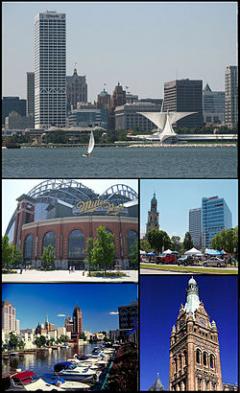


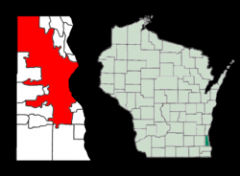
Milwaukee /mɪlËnwÉeËakiËa/ is the largest city in the U.S. state of Wisconsin, the 28th most populous city in the United States, and 39th most populous region in the United States. It is the county seat of Milwaukee County and is located on the southwestern shore of Lake Michigan. According to 2010 census data, the City of Milwaukee has a population of 594,833. Milwaukee is the main cultural and economic center of the Milwaukee aeRacine aeWaukesha Metropolitan Area with a population of 1,751,316 as of 2010. Milwaukee is also the regional center of the seven county Greater Milwaukee Area, with an estimated population of 2,014,032 as of 2008.
The first Europeans to pass through the area were French missionaries and fur traders. In 1818, the French-Canadian explorer Solomon Juneau settled in the area, and in 1846 Juneau's town combined with two neighboring towns to incorporate as the City of Milwaukee. Large numbers of German and other immigrants helped increase the city's population during the 1840s and the following decades.
Known for its brewing traditions, major new additions to the city include the Milwaukee Riverwalk, the Frontier Airlines Center (to be renamed "Delta Center"), Miller Park, an internationally renowned addition to the Milwaukee Art Museum, and Pier Wisconsin, as well as major renovations to the U.S. Cellular Arena. In addition, many new skyscrapers, condos, lofts and apartments have been constructed in neighborhoods on and near the lakefront and riverbanks.
There have been five ships of the United States Navy named after the city, including USS Milwaukee (LCS-5).
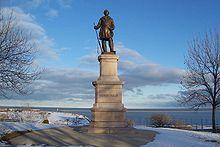
The Milwaukee area was originally inhabited by the Menominee, Fox, Mascouten, Sauk, Potawatomi, Ojibwe (all Algic/Algonquian peoples) and Ho-Chunk (Winnebago) (a Siouan people) Native American tribes. French missionaries and traders first passed through the area in the late 17th and 18th centuries. Alexis Laframboise, in 1785, coming from Michilimackinac (now in Michigan) settled a trading post; therefore, he is the first European descent resident of the Milwaukee region. The word "Milwaukee" may come from Potawatomi language minwaking, or Ojibwe language ominowakiing, "Gathering place [by the water]". Early explorers called the Milwaukee River and surrounding lands various names: Melleorki, Milwacky, Mahn-a-waukie, Milwarck, and Milwaucki. For many years, printed records gave the name as "Milwaukie". One story of Milwaukee's name says,
The spelling "Milwaukie" lives on in Milwaukie, Oregon, named after the Wisconsin city in 1847, before the current spelling was universally accepted.
Milwaukee was first settled by a French Canadian called Alexis Laframboise in 1785; it was only a trading post. Therefore, Solomon Juneau was not the first to arrive in the area, in 1818. However, Juneau founded the town called Juneau's Side, or Juneautown, that began attracting more settlers. Byron Kilbourn was Juneau's equivalent on the west side of the Milwaukee River. In competition with Juneau, he established Kilbourntown west of the Milwaukee River, and made sure the streets running toward the river did not join with those on the east side. This accounts for the large number of angled bridges that still exist in Milwaukee today. Further, Kilbourn distributed maps of the area which only showed Kilbourntown, implying Juneautown did not exist or that the east side of the river was uninhabited and thus undesirable. The third prominent builder was George H. Walker. He claimed land to the south of the Milwaukee River, along with Juneautown, where he built a log house in 1834. This area grew and became known as Walker's Point.
By the 1840s, the three towns had grown quite a bit, along with their rivalries. There were some intense battles between the towns, mainly Juneautown and Kilbourntown, which culminated with the Milwaukee Bridge War of 1845. Following the Bridge War, it was decided the best course of action was to officially unite the towns. So, on January 31, 1846, they combined to incorporate as the City of Milwaukee and elected Solomon Juneau as Milwaukee's first mayor.
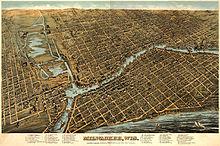
A great number of German immigrants increased the city's population during the 1840s and continued to migrate to the area during the following decades. The majority of these immigrants were from Mecklenburg, Pomerania, and Brandenburg. The German heritage and influence in the Milwaukee area is widespread.
During the middle and late 19th century, Wisconsin and the Milwaukee area became the final destination of many German immigrants fleeing the Revolution of 1848 in the various German states and in Austria. In Wisconsin they found the inexpensive land and the freedoms they sought. Over the next ten years over a million people left Germany and settled in the United States. Some were the intellectual leaders of this rebellion, but many were impoverished Germans. Others left because they feared constant political turmoil in Germany. One journalist commented in the Houston Post that "Germany seems to have lost all of her foreign possessions with the exception of Milwaukee, St. Louis and Cincinnati."
Today, Milwaukee's German heritage carries on in many of its restaurants, neighborhoods, schools and churches. German language is taught at the German Immersion School starting with 4-year old kindergarten students. The school was founded by Milwaukee Public Schools in 1977 and serves as a city-wide school to attract children from all parts of Milwaukee with a German language immersion program. Milwaukee hosts German Fest in July and Oktoberfest in September, annually.
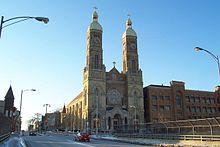
Although the German presence in Milwaukee after the Civil War remained strong, other groups made their way to the city. Foremost among these were Polish immigrants. The Poles had many reasons for leaving their homeland, mainly poverty and political oppression. Because Milwaukee offered the Polish immigrants an abundance of low-paying entry level jobs, it became one of the largest Polish settlements in the USA.
For many residents, Milwaukee's South Side is synonymous with the Polish community which settled here. The group's proud ethnicity maintained a high profile here for decades and it was not until the 1950s and 1960s that the families began to disperse to the southern suburbs.
By 1850, there were seventy-five Poles in Milwaukee County and the US Census indicates that they had a variety of occupations: grocers, blacksmiths, tavernkeepers, coopers, butchers, broommakers, shoemakers, draymen, laborers, and farmers. Three distinct Polish communities evolved in Milwaukee, with the majority settling in the area south of Greenfield Avenue. Milwaukee County's Polish population of 30,000 in 1890 rose to 100,000 by 1915. Poles historically have had a strong national cultural and social identity, maintained through the Catholic Church. A view of Milwaukee's South Side skyline is replete with the steeples of the many churches these immigrants built, churches that are still vital centers of the community.
St. Stanislaus Catholic Church and the surrounding neighborhood was the center of Polish life in Milwaukee. As the Polish community surrounding St. Stanislaus continued to grow, Mitchell Street became known as the "Polish Grand Avenue". As Mitchell Street grew denser, the Polish population started moving south to the Lincoln Village neighborhood, home to the Basilica of St. Josaphat and Kosciuszko Park. Other Polish communities started on the east side of Milwaukee and Jones Island, a major commercial fishing center settled mostly by Poles from the Baltic Coast.
Milwaukee has the fourth-largest Polish population in the U.S. at 57,485 (9.6% of the city's population), ranking behind New York City 213,447 (2.7%), Chicago 210,421 (7.3%), and Philadelphia 65,508 (4.3%). The city holds Polish Fest, an annual celebration of Polish culture and cuisine.
In addition to the Germans and Poles, Milwaukee received large influxes of other European immigrants from Lithuania, Italy, Ireland, France, Russia, Bohemia and Sweden, which included Jews, Lutherans, and Catholics. Italians number in the city at around 40,000 but, in Milwaukee County they number at 110,000. The largest Italian American festival Festa Italiana is held in the city. By 1910, Milwaukee shared the distinction with New York City of having the largest percentage of foreign-born residents in the United States. In 1910, whites represented 99.7% of the city's total population of 373 857. Milwaukee has a strong Greek Orthodox Community, many of whom attend the Greek Orthodox Church on Milwaukee's northwest side, designed by Wisconsin born architect, Frank Lloyd Wright. Milwaukee has a sizable Croatian population with Croatian churches and their own historic and successful soccer club The Croatian Eagles located at the 30 acre Croatian Park in Franklin, WI. Milwaukee also has a large Serbian population with Serbian restaurants and Serbian churches along with an American Serb Hall. The American Serb Hall in Milwaukee is known for its Friday fish fries and popular events. Many U.S. presidents have visited Milwaukee's Serb Hall in the past. The Bosnian population is growing in Milwaukee as well due to the recent migration after the war in Bosnia-Herzegovina.
During this time, a small community of African Americans who emigrated from the South formed a community that would come to be known as Bronzeville. As industry boomed, the African-American influence grew in Milwaukee.
By 1925, there were around 9,000 Mexican Americans that lived in Milwaukee, but the Great Depression forced many of them to move back home. In the 1950s, the Hispanic community was beginning to emerge. They arrived for jobs, filling positions in the manufacturing and agricultural sectors. During this time there were labor shortages due to the immigration laws that restricted Europeans from immigrating to the United States. Additionally, strikes contributed to the labor shortages.
During the first half of the 20th century, Milwaukee was the major city in which the U.S. Socialist Party earned the highest votes. Milwaukee elected three mayors who ran on the ticket of the Socialist Party: Emil Seidel (1910 ae1912), Daniel Hoan (1916 ae1940), and Frank Zeidler (1948 ae1960). Often referred to as "Sewer Socialists", the Milwaukee Socialists were characterized by their practical approach to government and labor.
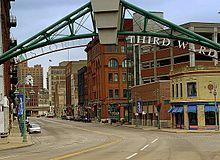
In 1892, Whitefish Bay, South Milwaukee, and Wauwatosa were incorporated. They were followed by Cudahy (1895), North Milwaukee (1897) and East Milwaukee, later known as Shorewood, in 1900. In the early 20th century West Allis (1902) and West Milwaukee (1906) were added, which completed the first generation of "inner-ring" suburbs.
In the 1920s Chicago gangster activity came north to Milwaukee during the Prohibition era. Al Capone, noted Chicago mobster, owned a home in the Milwaukee suburb Brookfield, where moonshine was made. The house still stands on a street named after Capone.
By 1960, Milwaukee had grown to become one of the largest cities in the United States of America. Its population peaked at 741,324.
By the late 1960s, Milwaukee's population had started to decline due to white flight. Milwaukee had a population of 636,212 by 1980, while the population of the metropolitan area increased. Milwaukee avoided the severe declines of its fellow "rust belt" cities due to its large immigrant population and historic neighborhoods.
Since the 1980s, the city has begun to make strides in improving its economy, neighborhoods, and image, resulting in the revitalization of neighborhoods such as the Historic Third Ward, Lincoln Village, the East Side, and more recently Walker's Point and Bay View, along with attracting new businesses to its downtown area. These efforts have substantially slowed the population decline and has stabilized many parts of Milwaukee.
Milwaukee's rich European history is evident today. Largely through its efforts to preserve its history, in 2006 Milwaukee was named one of the "Dozen Distinctive Destinations" by the National Trust for Historic Preservation.
In 2010, the Census Bureau released revised population numbers for Milwaukee that showed the city gained population, growing by 1.3%, between 2000 and 2009. This was the first population increase the city of Milwaukee has seen since the 1960 census.
Historic Milwaukee walking tours provide a guided tour of Milwaukee's historic districts, including topics on Milwaukee's architectural heritage, its glass skywalk system, and the Milwaukee Riverwalk.

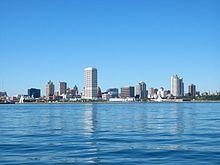
Milwaukee lies along the shores and bluffs of Lake Michigan at the confluence of three rivers: the Menomonee, the Kinnickinnic, and the Milwaukee. Smaller rivers, such as the Root River and Lincoln Creek, also flow through the city.
Milwaukee's terrain is sculpted by the glacier path and includes steep bluffs along Lake Michigan that begin about a mile (1.6 km) north of downtown. In addition, 30 miles (48 km) southwest of Milwaukee is the Kettle Moraine and lake country that provides an industrial landscape combined with inland lakes.
According to the United States Census Bureau, the city has a total area of 251.7 km2 (97.2 sq mi), most of it land.
North-south streets are numbered, and east-west streets are named. However, north-south streets east of 1st Street are named, like east-west streets. The north-south numbering line is along the Menomonee River (east of Hawley Road) and Fairview Avenue/Golfview Parkway (west of Hawley Road), with the east-west numbering line defined along 1st Street (north of Oklahoma Avenue) and Chase/Howell Avenue (south of Oklahoma Avenue). This numbering system is also used to the north by Mequon in Ozaukee County, and by some Waukesha County communities.
Milwaukee is crossed by Interstate 43 and Interstate 94, which come together downtown at the Marquette Interchange. Interstate 894 bypass runs through portions of the city's southwest side, and Interstate 794 comes out of the Marquette interchange eastbound, bends south along the lakefront and crosses the harbor over the Hoan Bridge, then ends near the Bay View neighborhood and becomes the "Lake Parkway" (WIS-794).

One of the distinctive traits of Milwaukee's residential areas are the neighborhoods full of so-called Polish flats. These are two-family homes with separate entrances, but with the units stacked one on top of another instead of side-by-side. This arrangement enables a family of limited means to purchase both a home and a modestly priced rental apartment unit. Since Polish-American immigrants to the area prized land ownership, this solution, which was prominent in their areas of settlement within the city, came to be associated with them.
Milwaukee's location in the Great Lakes Region often has rapidly changing weather, producing a humid continental climate (Koppen Dfa), with cold, windy, snowy winters, and very warm, humid summers. The warmest month of the year is July, when the 24-hour average is 71.8 °F (22.1 °C), while January is the coldest month, with a 24-hour average of 22.3 °F ( na5.4 °C). Of the 50 largest cities in the United States, Milwaukee has the second-coldest average annual temperature, next to that of Minneapolis-St. Paul.
Milwaukee's proximity to Lake Michigan causes a convection current to form around mid-afternoon in light wind regimes, resulting in the so-called "lake breeze" - a smaller scale version of the more common sea breeze. The lake breeze is most common between the months of March and July. This onshore flow causes cooler temperatures to move inland usually 5 to 15 miles, with much warmer conditions persisting further inland. Residents of the area refer to this phenomenon through the phrase "cooler near the lake". Because Milwaukee's official climate site, General Mitchell International Airport, is only 3 miles from the lake, seasonal variations in temperature are less extreme than in many other locations of the Milwaukee metropolitan area.
As the sun sets, the convection current reverses and an offshore flow ensues causing a land breeze. After a land breeze develops, warmer temperatures flow east toward the lakeshore, sometimes causing high temperatures to be reached during the late evening. The lake breeze is not a daily occurrence and will not usually form if a southwest, west, or northwest wind generally exceeds 15 mph (24 km/h). The lake acts to moderate cold air outbreaks along the lakeshore during winter months.
Aside from the lake influence, overnight lows in downtown Milwaukee year-round are often much warmer than suburban locations because of the urban heat island effect. Onshore winds elevate daytime relative humidity levels in Milwaukee as compared to inland locations nearby.
Thunderstorms in the region can be dangerous and damaging, bringing hail and high winds. In rare instances, they can bring a tornado. However, almost all summer rainfall in the city is brought by these storms. In spring and fall, longer events of prolonged, lighter rain bring most of the precipitation. A moderate snow cover can be seen on or linger for many winter days, but there are many days with less than 1 inch (2.5 cm) on the ground.
Milwaukee tends to experience highs that are 90 °F (32 °C) on or above 9 days per year, and subzero lows (
In the 1990s and 2000s, Lake Michigan experienced large algae blooms caused by sewer outfall from Milwaukee. In 2009 the city signed on as an Innovating City of the Global Compact Cities Program. The Milwaukee Water Council was also formed in 2009. Its objectives were to "better understand the processes related to freshwater systems dynamics" and to develop "a policy and management program aimed at balancing the protection and utilization of freshwater". The strategy used the Circles of Sustainability method.[clarification needed]
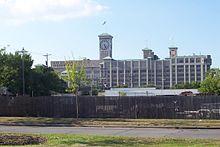
Milwaukee is the home to the international headquarters of 5 Fortune 500 companies: Johnson Controls, Northwestern Mutual, Manpower, Rockwell Automation and Harley-Davidson. Other companies based in Milwaukee include Jefferson Wells, Marshall & Ilsley, Hal Leonard, Wisconsin Energy, the American Society for Quality, Joy Global, A. O. Smith, Koss, Red Star Yeast, Master Lock, American Signal Corporation, GE Healthcare Diagnostic Imaging and Clinical Systems and MGIC Investments. The Milwaukee metropolitan area ranks fifth in the United States in terms of the number of Fortune 500 company headquarters as a share of the population. Milwaukee also has a large number of financial service firms, particularly those specializing in mutual funds and transaction processing systems, and a number of publishing and printing companies.
Service and managerial jobs are the fastest-growing segments of the Milwaukee economy, and health care alone makes up 27% the jobs in the city.
In 2009, five Milwaukee-area companies were selected as leaders in their industries as Fortune magazine recognized auThe World aos Most-Admired Companies. au Two Milwaukee companies ranked second in their field: Manpower Inc. in the temporary help industry and Northwestern Mutual in life and health insurance. Johnson Controls Inc., Glendale, placed fourth among motor-vehicle parts firms. Ranked fifth were Fiserv Inc., Brookfield, in financial data services and Kohl aos Corp., Menomonee Falls, among general merchandisers.
Milwaukee became synonymous with Germans and beer beginning in the 1850s. The Germans had long enjoyed beer and set up breweries when they arrived in Milwaukee. By 1856, there were more than two dozen breweries in Milwaukee, most of them German-owned and -operated. Besides making beer for the rest of the nation, Milwaukeeans enjoyed consuming the various beers produced in the city's breweries. As early as 1843, pioneer historian James Buck recorded 138 taverns in Milwaukee, an average of one per forty residents. Beer halls and taverns are abundant in the city to this day although only one of the major breweries aeMiller aeremains in Milwaukee.
Milwaukee's founding fathers had a vision for the city. They knew it was perfectly situated as a port city, a center for collecting and distributing produce. Many of the new immigrants who were pouring into the new state of Wisconsin during the middle of the 19th century were wheat farmers. By 1860, Wisconsin was the second ranked wheat-growing state in the country and Milwaukee shipped more wheat than any place in the world. Railroads were needed to transport all this grain from the wheat fields of Wisconsin to Milwaukee's harbor. Improvements in railways at the time made this possible.
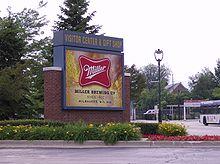
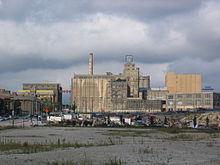
There was intense competition for markets with Chicago, and to a lesser degree, with Racine and Kenosha. Eventually Chicago won out. Due to its superior financial and transposition status, as well as being a hub on major railroad lines throughout the United States, Chicago had a distinct advantage over Milwaukee. Milwaukee did solidify its place as the commercial capital of Wisconsin and an important market in the Midwest.
Milwaukee was once the home to four of the world's largest beer breweries (Schlitz, Blatz, Pabst, and Miller), and was the number one beer producing city in the world for many years. Despite the decline in its position as the world's leading beer producer after the loss of two of those breweries, its one remaining major brewery, Miller Brewing Company remains a key employer by employing over 2,200 of the city's workers. Because of Miller's solid position as the second-largest beer-maker in the U.S., the city remains known as a beer town despite there being only one brewery.
The historic Milwaukee Brewery, located in "Miller Valley" at 4000 West State Street, is the oldest still-functioning major brewery in the United States. In July 2008, it was announced that Coors beer would be added to the list of beers brewed in Miller Valley. This created additional brewery jobs in Milwaukee, however, the company's world headquarters moved from Milwaukee to Chicago.
Besides Miller and the heavily-automated Leinenkugel's brewery in the old Blatz 10th Street plant, the only other currently operating stand-alone breweries in Milwaukee are Milwaukee Brewing Company, a microbrewery in Walker's Point neighborhood, and Lakefront Brewery, a microbrewery located in Brewers Hill. The suburb of Glendale is home to Sprecher Brewery, another locally popular microbrew. Various brewpubs can be found throughout the Milwaukee area, including Milwaukee Ale House and Water Street Brewery.
Three beer brewers with Wisconsin operations made the 2009 list of the 50 largest beermakers in the United States, based on beer sales volume. Making the latest big-breweries list from Wisconsin is MillerCoors at No. 2. MillerCoors is a joint venture formed last year by Milwaukee-based Miller Brewing Co. and Golden, Colorado-based Molson Coors Brewing Company. The Minhas Craft Brewery in Monroe, Wisconsin which brews Huber, Rhinelander and Mountain Crest brands, ranked No. 14 and New Glarus Brewing Company., New Glarus, Wisconsin whose brands include Spotted Cow, Fat Squirrel and Uff-da, ranked No. 32.
Happy Days and Laverne and Shirley, two sitcoms that aired on ABC in the 1970s and 1980s, were set in Milwaukee, and often used the Milwaukee breweries as a backdrop for the storyline.
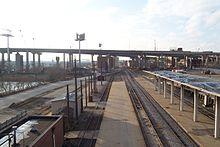
Because of its easy access to Lake Michigan and other waterways, Milwaukee's Menomonee Valley has historically been home to manufacturing, stockyards, rendering plants, shipping, and other heavy industry.
Reshaping of the valley began with the railroads built by city co-founder Byron Kilbourn to bring product from Wisconsin's farm interior to the port. By 1862 Milwaukee was the largest shipper of wheat on the planet, and related industry developed. Grain elevators were built and, due to Milwaukee's dominant German immigrant population, breweries sprang up around the processing of barley and hops. A number of tanneries were constructed, of which the Pfister & Vogel tannery grew to become the largest in America.
In 1843 George Burnham and his brother Jonathan opened a brickyard near 16th Street. When a durable and distinct cream-colored brick came out of the clay beds, other brickyards sprang up to take advantage of this resource. Because many of the city's buildings were built using this material it earned the nickname "Cream City", and consequently the brick was called Cream City brick. By 1881 the Burnham brickyard, which employed 200 men and peaked at 15 million bricks a year, was the largest in the world.
Flour mills, packing plants, breweries, railways and tanneries further industrialized the valley. With the marshlands drained and the Kinnickinnic and Milwaukee Rivers dredged, attention turned to the valley.
Along with the processing industries, bulk commodity storage and machining and manufacturing entered the scene. The valley was home to the Milwaukee Road, Falk Corporation, Cutler-Hammer, Harnischfeger, Chain Belt Company, Nordberg and other industry giants.
Early in the 20th century, Milwaukee was home to several pioneer brass era automobile makers, including Ogren (from 1919 to 1922).
In 2007, three Milwaukee-area companies were among nine firms honored for manufacturing excellence in the Wisconsin Manufacturer of the Year competition. Astronautics Corporation of America and Brady Corporation, both of which have headquarters in Milwaukee, and Wisconsin Plating Works Inc., Racine, each received special awards. Privately held Astronautics, a major supplier of government and commercial avionics, was honored for its high-technology research and development program. Brady, a publicly owned manufacturer of signs, labels and other identification and security products, received an award for corporate excellence. Privately owned Wisconsin Plating Works, which provides metal finishing services, received an award for employee and environmental stewardship. Nominated companies were evaluated in areas such as financial growth or consistency, technological advances, product development, environmental solutions, operational excellence/continuous improvement, commitment to employees, and effective research and development.
In 2009, a group of elected officials and business leaders is trying to entice Boston-Power Inc., a Massachusetts-based battery maker, to open a factory in Milwaukee. Milwaukee Alderman Tony Zielinski has introduced a resolution to have the city of Milwaukee appropriate from $1 million to $20 million for a factory for Boston-Power, the Westborough, Mass.-based manufacturer of lithium-ion batteries for laptop computers, personal digital assistants, mobile telephones and other portable devices. Stimulus package funds are included in the $787 billion stimulus package signed by President Barack Obama for lithium-ion battery development, he said. Boston-Power aos interest in locating a plant in Milwaukee stems in part from the area aos manufacturing heritage and that it aos home to Johnson Controls Inc., the manufacturer has been developing lithium-ion batteries for hybrid electric vehicles, plug-in hybrid-electric vehicles and electric vehicles.
At the 2010 Census there were 594,833 people residing in Milwaukee, a decrease of -0.4%, since 2000. According to the U.S. Census Bureau, Milwaukee's population estimate for July 1, 2011 is 597,867 people, an increase of 3,034 from the 2010 Census.
As of the 2000 census, the city had a population of 596,974. As of 2000, there were 232,188 households, and 135,133 families residing in the city. The population density is 2,399.5/km ² (6,214.3 per square mile). There are 249,225 housing units at an average density of 1,001.7/km ² (2,594.4 per square mile).
There are 232,188 households, of which 30.5% have children under the age of 18 living with them, 32.2% are married couples living together, 21.1% have a female householder with no husband present, and 41.8% are non-families. 33.5% of all households are made up of individuals and 9.5% have someone living alone who is 65 years of age or older. The average household size is 2.50 and the average family size is 3.25.
According to the 2000 Census, there were at least 1,408 same-sex households in Milwaukee which accounts for 0.6% of all households in the city. Gay-friendly communities have developed in primarily in Walker's Point, but also in Bay View, Historic Third Ward, Riverwest, and the East Side. In 2001, Milwaukee was named the #1 city for lesbians by Girlfriends magazine.
In the city the population is spread out with 28.6% under the age of 18, 12.2% from 18 to 24, 30.2% from 25 to 44, 18.1% from 45 to 64, and 10.9% who are 65 years of age or older. The median age is 31 years. For every 100 females there are 91.6 males. For every 100 females age 18 and over, there are 87.2 males.
The median income for a household in the city is $32,216, and the median income for a family is $37,879. Males have a median income of $32,244 versus $26,013 for females. The per capita income for the city is $16,181. 21.3% of the population and 17.4% of families are below the poverty line. Despite the high poverty rates, in 2010, home renters of Milwaukee faced an increasing rate for rent, up 3%. Out of the total population, 31.6% of those under the age of 18 and 11.0% of those 65 and older are living below the poverty line.
According to the 2010 Census, 44.8% of the population was White (37.0% non-Hispanic white), 40.0% was Black or African American, 0.8% American Indian and Alaska Native, 3.5% Asian, 3.4% from two or more races. 17.3% of Milwaukee's population was of Hispanic, Latino, or Spanish origin (they may be of any race).
According to the 2006-2008 American Community Survey, 38.3% of Milwaukee's residents reported having African American ancestry and 20.8% reported German ancestry. Other significant population groups include Polish (8.8%), Irish (6.5%), Italian (3.6%), English (2.8%), and French (1.7%). Hispanics makeup 15.7% of the population.
The metropolitan area was cited as being the most segregated in the U.S. in a Jet Magazine article in 2002. The source of this information was a segregation index developed in the mid 1950s and used since 1964. In 2003, a non-peer reviewed study was conducted by hired researchers at the University of Wisconsin aeMilwaukee which claimed that Milwaukee is not "hypersegregated" and instead ranks as the 43rd most integrated city in America. In 2011, according to an article by Daniel Denvir at http://www.salon.org, John Paul Dewitt of censusscope.org and the University of Michigan's Social Science Data Analysis Network looks at census data and finds Milwaukee to be the most segregated urban area in the US. Through continued dialogue between Milwaukee's citizens, the city is making an effort to reduce racial tensions and reduce the rate of segregation. With demographic changes in the wake of white flight, segregation in metropolitan Milwaukee is primarily in the suburbs rather than the city as in the era of Father Groppi.
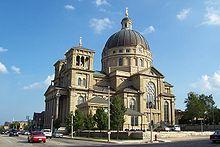
The Association of Religion Data Archives reported on the religious composition of the Milwaukee-Racine area as of 2000. Approximately 55% of residents were adherents to one of the 188 groups included in the data.
Of them, 58% were Catholic, 23% Lutheran, 3% Methodist, and 2.5% Jewish. "Others" included adherents to other Protestant denominations, Orthodox churches, paganism and Eastern religions. Historically African-American denominations were not included in the data.
Milwaukee is home to the Roman Catholic Archdiocese of Milwaukee, and the Episcopal Diocese of Milwaukee. The School Sisters of the Third Order of St Francis have their mother house in Milwaukee, and several other religious orders have a significant presence in the area, including the Jesuits and Franciscans. Milwaukee, where Father Josef Kentenich was exiled for 14 years from 1952 ae1965, is also the center for the Schoenstatt Movement in the United States. St. Joan of Arc Chapel, the oldest church in Milwaukee, is located on the Marquette University campus. St. Josaphat Basilica was the first church to be given the Basilica honor in Wisconsin and the third in the United States. Holy Hill National Shrine of Mary, Help of Christians, located northwest of Milwaukee, in Hartford, Wisconsin, was also made a Basilica in 2006.
Milwaukee is home for several Lutheran Church Synods, including The Greater Milwaukee Synod of the Evangelical Lutheran Church in America; the Lutheran Church Missouri Synod (LCMS), which operates Concordia University in Mequon and Milwaukee Lutheran High School, the oldest Lutheran high school in the nation; and the Wisconsin Evangelical Lutheran Synod (WELS), which was founded in 1850 in Milwaukee and maintains its national headquarters there.
The Church of Jesus Christ of Latter-day Saints has a presence in the Milwaukee area. The Milwaukee area has two stakes, with fourteen wards and four branches among them. The closest temple is the Chicago Illinois Temple. The area is part of the Wisconsin Milwaukee Mission.
Numerous mosques, synagogues, and temples serve Milwaukee's Muslim, Jewish, Hindu, Sikh, Unitarian Universalist, and Buddhist communities.
Milwaukee has a mayor-council form of government. With the election of Mayor Jon O. Norquist in 1988, the city adopted a cabinet form of government with the mayor appointing those department heads not otherwise elected or appointed -- notably the Fire and Police Chiefs. While this gave the mayor greater control of the day-to-day operations of the city, the Common Council retains almost complete control over the city's finances and the mayor, with the exception of his proposed annual budget, cannot directly introduce legislation. The Common Council consists of elected members, each representing one of 15 districts in the city. Milwaukee has a history of giving long tenures to its mayors; from Frank Zeidler to Tom Barrett, the city has had only four mayors in the last 60 years. When 28-year incumbent Henry Maier retired in 1988, he held the record for longest term of service for a city of Milwaukee's size.
Milwaukee has been a Democratic stronghold for more than a century, with Democrats dominating every level of government, except for its Socialist mayors and (for briefer periods) other city and county offices. The city is split among three state Senate districts, each of which is composed of three Assembly districts. All 12 of the officials representing the city in the State Legislature are Democrats. In 2008, Barack Obama won Milwaukee with 77% of the vote.
Milwaukee makes up the overwhelming majority of Wisconsin's 4th congressional district. The district is heavily Democratic. The Democratic primary for the seat is considered more important than the general election. The district is currently represented by Democrat Gwen Moore.
Milwaukee residents elect representatives to the Milwaukee County Board of Supervisors. The current County executive is Chris Abele.
For several years, Milwaukee ranked among the ten most dangerous large cities in the United States. However, despite its improvement since then, Milwaukee still fares worse than average when comparing specific crime types to the national average (e.g., homicide, rape, robbery); only aggravated assaults occur less frequently in Milwaukee than the national average.
Also showing encouraging progress is Milwaukee aos confrontation of gang activity. A story in Milwaukee Magazine documented
autens of thousands of gang members in the city ae black, white, Latino and Asian gangs ae all involved in some way in the drug trade and almost all riddled with rats - hundreds of informants reporting back to the cops in the Milwaukee Police Department aos Gang Unit. au
The unit was reactivated in 2004 after Police Chief Nannette Hegerty was sworn into office. In 2006 alone, the story noted, some 4,000 charges were brought against criminals through Milwaukee aos Gang Unit.
Author Mitchell Nevin's book The Cozen Protocol describes an ongoing war over drug turf between two Latino gangs on Milwaukee's near south side. Although fictional, The Cozen Protocol blends actual incidents of major crimes into the overall plot and incorporates the personality traits of law enforcment officials into the novel's characters. One respected law enforcement veteran sees The Cozen Protocol as a solid depiction of the city's gang subculture.
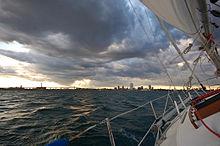
Milwaukee is a popular venue for Lake Michigan sailing, windsurfing, kitesurfing, ethnic dining, and cultural festivals. Often referred to as the City of Festivals, Milwaukee has various cultural events which take place throughout the summer at Maier Festival Park, on the lake. Museums and cultural events, such as Jazz in the Park, occur weekly in downtown parks. A 2011 study by Walk Score ranked Milwaukee 15th most walkable of fifty largest U.S. cities.
Milwaukee is home to a wide variety of museums:
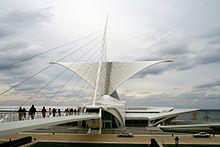
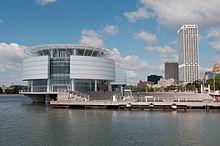
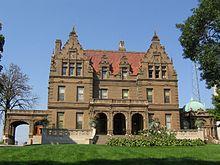
Milwaukee is home to a number of musical groups and venues, including:
In 1984 ComedySportz was founded in Milwaukee by native Dick Chudnow and has since become a franchise, with numerous venues throughout the United States and England. In July 2009 the ComedySportz world championship returned to Milwaukee to coincide with their 25th anniversary.

The Rave/Eagles Ballroom

Milwaukee Youth Arts Center

Turner Hall
Milwaukee has some 75 sculptures to honor the many people and topics reflecting the city's history. Among the more prominent monuments are:

Leif Ericson monument

Tadeusz KoÅociuszko monument in Kosciuszko Park in Historic Lincoln Village.
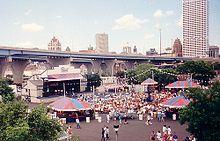
While Milwaukee had been previously marketed as "A Genuine American City" as well as "A Great Place on a Great Lake," it has earned the nickname, the "City of Festivals."
The city hosts the Wisconsin State Fair, as well as an annual lakefront fair called Summerfest. Listed in the 1999 Guinness Book of World Records as the largest music festival in the world, for the last several years Summerfest has attracted around a million visitors each year to its eleven stages.
Milwaukee is home to a variety of primarily ethnically themed festivals throughout the summer. Held generally on the lakefront Summerfest grounds, these festivals span several days (typically Friday plus the weekend) and celebrate Milwaukee's history and diversity. In 2008 Riversplash, which markets itself as 'the official opening of summer', kicks off festival season on the last weekend of May. Festivals for the LGBT (PrideFest) and Polish (Polish Fest) communities follow in June. Summerfest spans 11 days at the end of June and beginning of July. Milwaukee hosts the Great Circus Parade in July. In 1960, the Shamrock Club of Wisconsin was started in Milwaukee with chapters in other parts of the state. There are French (Bastille Days), Greek, Italian (Festa Italiana) and German (German Fest) festivals in July. The African, Arab, Irish, Mexican, and American Indian events wrap it up from August through September. Milwaukee is also home to Trainfest, the largest operating model railroad show in America, in November.
Milwaukee's ethnic cuisines include German, Italian, Russian, Hmong, French, Serbian, Polish, Thai, Japanese, Chinese, Mexican, Indian, Korean, Vietnamese, Turkish, Middle Eastern and Ethiopian.
Famous Chef Julia Child visited Milwaukee and selected Milwaukee native chef Sanford D'Amato to cook for her 80th birthday. D'Amato, trained in New York City, is the executive chef for Milwaukee's five star restaurant Sanford, and Coquette Cafe Milwaukee.
Milwaukee County hosts the Zoo-A La Carte at the Milwaukee County Zoo, and various ethnic festivals like Summerfest, German Fest, and Festa Italiana to celebrate various types of cuisine in summer months.
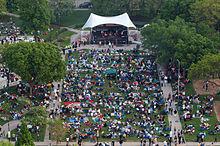
Milwaukee has a long history of musical activity. The first organized musical society, called "Milwaukee Beethoven Society" formed in 1843, three years before the city was incorporated.
The large concentrations of German and other European immigrants contributed to the musical character of the city. Saengerfesten were held regularly.
In the early 20th century guitar legend Les Paul, and pianist Liberace were some of the area's most famous musicians. Both Paul, born in Waukesha, and Liberace, born in West Allis, launched their internationally recognized careers in Milwaukee music venues. Paramount Records, primarily a jazz and blues record label, was founded in Grafton, a northern suburb of Milwaukee, in the 1920s and 1930s. Hal Leonard Corporation, founded in 1947 is one of the worlds largest music print publishers, and is headquartered in Milwaukee. The Hal Leonard Guitar Method was launched in Milwaukee becoming one of the first methods to incorporate popular music. The course today remains the leading guitar method in the world; it has taught millions of people how to play. Today, Hal Leonard represents in print some of the world's best known and most respected artists, such as: Aerosmith, Johnny Cash, Eric Clapton, Jimi Hendrix, Billy Joel, Elton John, B.B. King, Nirvana, Tom Petty, Pink Floyd, The Police, Elvis Presley, Queen, Bonnie Raitt, the Red Hot Chili Peppers, Frank Sinatra, Sting, U2, Stevie Ray Vaughan, The Who, Hank Williams, Stevie Wonder, and others. More recently, Milwaukee has enjoyed a vibrant history of rock, hip hop, jazz, soul, blues, punk, ska, industrial music, electronica, world music, and pop music bands.
Milwaukee's most famous music venue is Summerfest. Summerfest claims to be the world's largest music festival and was founded in Milwaukee in 1968. Live musical acts are offered on 11 stages, for 11 days beginning in late June. On the Summerfest grounds, the largest theater in the city is the Marcus Amphitheater with a 23,000 person capacity.
Venues such as Pabst Theater, Marcus Center for Performing Arts, the Helene Zelazo Center for the Performing Arts, Marcus Amphitheater (Summerfest Grounds), Riverside Theater, the Northern Lights Theater, and The Rave frequently bring internationally-known acts to Milwaukee. 'Jazz in the Park', a weekly jazz show held at downtown Cathedral Square Park, has become a summer tradition; free, public performances with a picnic environment. Nearby Pere Marquette Park hosts "River Rhythms" on Wednesday nights.
The Milwaukee area is known for producing national talents such as Steve Miller (rock), Wladziu Valentino Liberace (piano), Al Jarreau (jazz), Eric Benet (neo-soul), Speech (hip hop), Daryl Stuermer (rock), BoDeans (rock), Les Paul (rock), the Violent Femmes (alternative), Coo Coo Cal (rap), Die Kreuzen (punk), Andy Hurley of Fall Out Boy (punk), Eyes To The Sky (hardcore), Rico Love (rap), Andrew 'The Butcher' Mrotek of The Academy Is... (alt-rock), The Promise Ring (indie), Realm (metal), the Gufs (alt rock) and Decibully (indie).
Through its Milwaukee Wireless Initiative, the city has contracted with Midwest Fiber Networks to invest US$20 million in setting up a municipal wireless network city-wide. Under the plan, the city will designate numerous government and public service websites for free access, and city residents will be able to access unlimited content for a monthly fee. Full wireless coverage was expected by March 2008, but delays have been reported.
The city had previously established free wireless networks in two downtown city parks: Cathedral Square; and Pere Marquette Park.

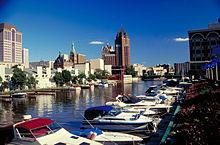
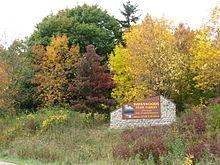
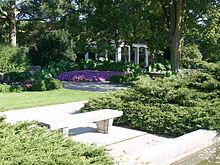
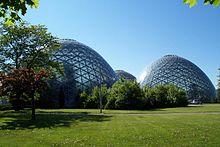
Milwaukee County is known for its well-developed Parks of Milwaukee park system. The "Grand Necklace of Parks", designed by Frederick Law Olmsted, designer of New York's Central Park, includes Lake Park, River Park (now Riverside Park), and West Park (now Washington Park). Milwaukee County Parks offer facilities for sunbathing, picnics, grilling, disc golf, and ice skating. Milwaukee has over 140 parks with over 15,000 acres (6,100 ha) of parks and parkways.
The Monarch Trail, located on the Milwaukee County Grounds in Wauwatosa, is a 1.25-mile (2 km) trail that highlights the fall migration of the Monarch butterflies.
During the summer months, Cathedral Park in Downtown Milwaukee is home to "Jazz in the Park" on Thursday nights. Nearby Pere Marquette Park hosts "River Rhythms" on Wednesday nights.
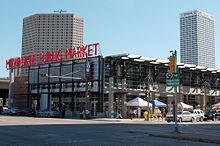
Milwaukee Public Market, located in the Third Ward neighborhood, is an indoor market that sells produce, seafood, meats, cheeses, vegetables, candies, and flowers from local businesses.
Milwaukee County Farmers Markets, held in season, sell fresh produce, meats, cheeses, jams, jellies, preserves and syrups, and plants. Farmers markets also feature artists and craftspeople. Locations include: Aur Farmers Market, Brown Deer Farmers Market, Cudahy Farmers Market, East Town Farm Market, Fondy Farmers Market, Mitchell Street Market, Riverwest Farmers Market, Silver Spring Farmers Market, South Milwaukee Farmers Market, South Shore Farmers Market, Uptown Farmers Market, Wauwatosa Farmers Market, West Allis Farmers Market, and Westown Market on the Park.

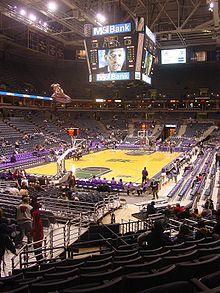
Milwaukee has a rich history of involvement in professional and nonprofessional sports, since the 19th century. Abraham Lincoln watched cricket in Milwaukee in 1849 when he attended a game between Chicago and Milwaukee. In 1854, the Milwaukee Cricket Club had 150 members. Currently, Milwaukee's sports teams include:
Milwaukee is the host city of The Point Premium Root Beer International Cycling Classic, presented by Time Warner Cable, which includes the men's and women's Superweek Pro Tour races, featuring top professional and elite amateur cyclists and teams from across the U.S. and more than 20 foreign countries.
Between 1933 and 1994 the Green Bay Packers of the NFL split their home games between Green Bay and Milwaukee.
Jeff "Duke" Roufus (born 1970) is an American former kickboxer who is now one of the top trainers of UFC fighters as head coach of the legendary Roufusport competition team based in Milwaukee, Wisconsin USA. He is one of the most recognizable striking coaches in North America, and is considered to be one of the top trainers of Muay Thai outside of Thailand. Following his retirement, he has become an accomplished trainer, working with many UFC/WEC stars including current WEC World Lightweight Champion Anthony Pettis, Alan Belcher, Pat Barry, Erik Koch, Ben Rothwell and Matt Mitrione. Former students include former UFC Lightweight Champion Jens Pulver and The Ultimate Fighter Season One star Stephan Bonnar.
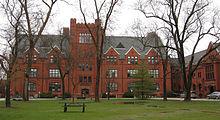
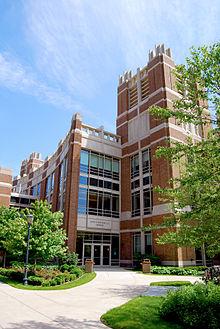
Milwaukee has one of the highest per capita student populations in North America, ranking 6th among U.S. and Canadian cities in number of college students per 100 residents, according to a January 2000 study from McGill University
Milwaukee area universities and colleges:
Milwaukee maintains Milwaukee Public Schools (MPS), the largest school district in Wisconsin and thirty third in the nation. As of 2007, it had an enrollment of 89,912 students and as of 2006 employed 11,100 full-time and substitute teachers in 323 schools. Milwaukee Public Schools operate as magnet schools, with individualized specialty areas for interests in academics or the arts. Washington High School, Riverside University High School, Rufus King High School, Ronald Wilson Reagan College Preparatory High School, Samuel Morse Middle School for the Gifted and Talented, Golda Meir School, Milwaukee High School of the Arts, and Lynde & Harry Bradley Technology and Trade School are some of the magnet schools in Milwaukee. In 2007, 17 MPS high schools appeared on a national list of "dropout factories" - schools where fewer than 60% of freshmen graduate on time. Milwaukee is also home to over two dozen private or parochial high schools (e.g., St. Anthony High School, Divine Savior Holy Angels High School, Thomas More High School, Dominican High School, Messmer High School, Marquette University High School, Milwaukee Lutheran High School, Pius XI High School, St. Joan Antida High School, and University School of Milwaukee among others) and many private and parochial middle and elementary schools.
Of persons in Milwaukee aged 25 and above, 84.5% have a high school diploma, and 27% have a bachelor's degree or higher. (2000)
Milwaukee's health care industry includes several health systems. The Milwaukee Regional Medical Complex, located between 8700 and 9200 West Wisconsin Avenue, is on the Milwaukee County grounds. This area includes the Children's Hospital of Wisconsin, Froedtert Hospital, BloodCenter of Wisconsin, the Ronald McDonald House, Curative Rehabilitation, and the Medical College of Wisconsin. Aurora Health Care includes St. Luke's Medical Center, Aurora Sinai Medical Center, West Allis Memorial, and St. Luke's SouthShore. Wheaton Franciscan Healthcare includes St. Joseph's Hospital, Elmbrook Memorial (Brookfield), and others in the Milwaukee area. Columbia St. Mary's Hospital is on Milwaukee's lakeshore and has established affiliations with Froedtert Hospital and the Medical College of Wisconsin. The Medical College of Wisconsin is one of two medical schools in Wisconsin and the only one in Milwaukee.
Other health care non-profit organizations in Milwaukee include national headquarters of the American Academy of Allergy, Asthma, and Immunology and the Endometriosis Association.
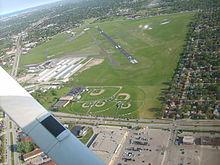
Milwaukee is home to two airports, General Mitchell International Airport on the southern edge of the city, and the smaller Timmerman Field on the north side. Mitchell is served by 12 airlines, which offer roughly 240 daily departures and 245 daily arrivals. Approximately 90 cities are served nonstop or direct from Mitchell International. It is the largest airport in Wisconsin and the 34th largest in the nation. The airport terminal is open 24 hours a day. Since 2005, Mitchell International Airport has been connected by the Amtrak Hiawatha train service, which provides airport access via train to Chicago and downtown Milwaukee. Southwest/AirTran, Frontier Airlines, American Airlines, United Airlines, Air Canada and Delta Air Lines are amongst the carriers using Milwaukee's General Mitchell International Airport gates. In 2011, Airports Council International stated that Mitchell was in the top 30 fastest growing airports in the world, serving 844,453 passengers in the month of April 2011 alone. Reasons for the airport's fast growth revolve primarily around the fact that the average cost for an outbound flight at Mitchell Intl was $78 less than the national average.
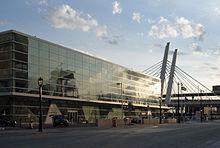
Milwaukee's Amtrak station was renovated in 2007 to create the Milwaukee Intermodal Station near downtown Milwaukee and the Third Ward to provide Amtrak riders access to Greyhound Lines and Jefferson Lines intercity bus transportation. Milwaukee is served by the Hiawatha Amtrak express service up to seven times daily between downtown Milwaukee and downtown Chicago, including a stop at the Milwaukee Airport Railroad Station, Sturtevant, WI near Racine, WI, Glenview, IL. Amtrak operates its Empire Builder passenger train daily between Chicago and the Pacific Northwest, with stops near Madison, Wisconsin Dells and Minneapolis. In 2010, $800 million in federal funds were allocated to the creation of high speed rail links from Milwaukee to Chicago and Madison; but the funds were eventually rejected by newly-elected Wisconsin Governor Scott Walker.
In 2009, Wisconsin Gov. Jim Doyle, with seven other governors of Midwestern states and then-Chicago Mayor Richard M. Daley, joined in bipartisan support of a high-speed rail network that would link cities around the region. Milwaukee would be connected to Madison and Chicago as part of the first phase of the system. auPresident Obama aos vision of making high-speed rail a part of our nation aos future transportation network holds great promise au, Doyle and co-signers wrote in a letter to U.S. Department of Transportation Secretary Ray LaHood. auWe recognize that a high-speed rail network has the potential to reduce highway and airway congestion, greenhouse gas emissions and the nation aos dependence on foreign oil. au Governors Pat Quinn of Illinois, Jay Nixon of Missouri, Mitch Daniels of Indiana, Chet Culver of Iowa, Jennifer Granholm of Michigan, Ted Strickland of Ohio and Tim Pawlenty of Minnesota were co-signers of the letter. The American Recovery and Reinvestment Act funds and mandates high-speed passenger rail and the Midwestern network would include 3,000 miles (4,800 km) of existing rights of way to connect cities with trains capable of at least 110 miles per hour (180 km/h). Chicago would serve as the hub, just as it does for freight. The rail network would link large and small metropolitan areas, airports, bus stations and highways.
The Obama administration announced $823 million in federal stimulus spending to build high-speed rail for the southern half of Wisconsin. The rail line connecting Milwaukee and Madison, which Governor Jim Doyle touted as revolutionary, would have started out at roughly 79 mph (127 km/h) when it would have begun in 2013 and would not have reached its top speed of 110 mph (180 km/h) for at least several years. The state's application for the federal funds put the acceleration in 2016, when the line was expected to expand to the Twin Cities. In 2011, the project was ended by Doyle's successor, Scott Walker.
The Badger Bus and station in downtown Milwaukee provides bus service between Milwaukee and Madison, Wisconsin. Stops include the UW aeMadison Memorial Union, Madison Bus Depot, Johnson Creek, Goerkes Corners, Milwaukee 84th St, Milwaukee Bus Depot (downtown Milwaukee), and Milwaukee Airport. The Milwaukee County Transit System provides bus services within Milwaukee County. The renovated Milwaukee Intermodal Station provides Jefferson Lines intercity bus riders access to Amtrak and Greyhound Lines.
A tram system known as the Milwaukee Connector was proposed and passed by the Common Council, but Mayor Tom Barrett vetoed the bill because of problems of cost and availability. A modern streetcar is now planned to connect the Milwaukee Intermodal Station, downtown Milwaukee, and Ogden Ave. The project was projected to cost $64.9 million and open in Fall 2014.
A 0.5% sales tax was proposed for the counties of Milwaukee, Racine, and Kenosha by the Southeast Wisconsin Regional Transit Authority to fund the KRM (Kenosha-Racine-Milwaukee) Commuter Rail project serving those cities as well as several other stops on the route. A connection to Metra commuter rail in Kenosha was planned with some trains continuing to Chicago. In Milwaukee, the line was to terminate at the Milwaukee Intermodal Station. In June 2011, authorizing legislation for regional transit authorities in Wisconson was repealed, leading to the dissolution of the Southeastern Regional Transit Authority, which was leading the commuter rail planning. The project is currently on indefinite hold.
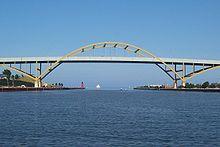
Two of Wisconsin's Interstate highways intersect in Milwaukee. Interstate 94 comes north from Chicago to enter Milwaukee and continues west to Madison. Interstate 43 enters Milwaukee from the southwest and continues north to Green Bay. Milwaukee has two branch interstate highways, Interstate 894 and Interstate 794. I-894 extends from the western suburbs to the southern suburbs, bypassing downtown. I-794 extends east from the Marquette Interchange to Lake Michigan before turning south over the Hoan Bridge toward the airport, turning into Highway 794 along the way. Milwaukee is also served by three US highways. U.S. Route 18 provides a link from downtown to points west. U.S. Route 41 and U.S. Route 45 both provide north-south freeway transportation on the western side of the city.
In 2010, the Milwaukee area was ranked the 4th best city for commuters by Forbes.
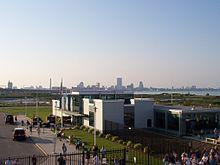
Milwaukee connects with Muskegon, Michigan through the Lake Express high-speed auto and passenger ferry. The Lake Express travels across Lake Michigan from late spring to the fall of each year.

Milwaukee has over 65 miles (105 km) of bicycle lanes and trails, most of which run alongside or near its rivers and Lake Michigan. The Oak Leaf Trail, a multi-use recreational trail, provides bicycle trails throughout the city and county. Still pending are the creation of bicycle lanes along major commuting routes, such as the Hoan Bridge connector between downtown and the suburbs to the south. The city has also identified over 250 miles (400 km) of streets on which bike lanes will fit. It has created a plan labeling 145 miles (233 km) of those as high priority for receiving bike lanes. As part of the city's Bicycle and Pedestrian Task Force's mission to "make Milwaukee more bicycle and pedestrian friendly", over 700 bike racks have been installed throughout the city. The Bicycle Federation of Wisconsin holds an annual Bike to Work Week. The event, held in May each year, has frequently featured a commuter race between a car, a bus, and a bike; and also a morning ride into work with the mayor. In 2006, Milwaukee obtained bronze-level status from the League of American Bicyclists, a rarity for a city its size.
Starting on June 4, 2009, the Milwaukee County Transit System has begun installing bicycle racks to the front of county buses. This "green" effort has been done, in part, with hopes of settling an asbestos lawsuit leveled by the state at the county in 2006. The lawsuit cites the release of asbestos into the environment when the Courthouse Annex was demolished.[100]
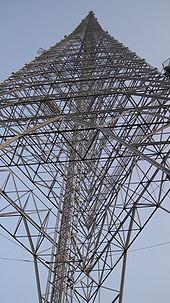
Milwaukee's only surviving daily newspaper is the Milwaukee Journal Sentinel which was formed when the morning paper the Milwaukee Sentinel merged with the afternoon paper Milwaukee Journal. The most prominent alternative weekly is Shepherd Express, a free publication. Other local newspapers, city guides and magazines with large distributions include M Magazine, Milwaukee Magazine, The Bay View Compass, and Riverwest Currents. OnMilwaukee.com is an online magazine providing news and events. The UWM Post is the independent, student-run weekly at the University of Wisconsin aeMilwaukee. The Onion, a weekly satirical publication, is distributed free in Milwaukee (one of the paper's earliest markets) with localized A.V. Club content, in addition to nine other U.S. cities.[101]
Milwaukee's major network television affiliates are WTMJ 4 (NBC), WITI 6 (Fox), WISN 12 (ABC), WVTV 18 (CW), WCGV 24 (MyNetworkTV), and WDJT 58 (CBS). Spanish language programming is on WBWT 38 (Azteca America) and WYTU-LP 63 (Telemundo). Milwaukee's public broadcasting stations are WMVS 10 and WMVT 36.
Other television stations in the Milwaukee market include WMKE 7 (America One), WVCY 30 (FN), WBME-CA 41 (Independent), WMLW-TV 49 (Me-TV), WWRS 52 (TBN), Sportsman Channel, and WPXE 55 (ION)
There are numerous radio stations throughout Milwaukee and the surrounding area.
Journal Communications (a NYSE-traded corporation), in addition to owning the Journal Sentinel, also owns: WTMJ-TV; WTMJ and WLWK radio stations; and well over a dozen local weekly newspapers in the metropolitan area, all with a consistently conservative editorial bias. As a result, it has been repeatedly criticized for having a near-monopoly in local news coverage.,[102][103][104] with critics concerned about a certain uniformity of thought and coverage, as well as to lack of coverage of topics unfriendly to Journal Communications interests in such matters as labor disputes.[105] Journal Communications at one point created an ersatz "alternative weekly", MKE, which failed due to a lack of credibility as an "alternative" to its own parent company.[106]
The city of Milwaukee has several sister cities as designated by Sister Cities International and Milwaukee's Sister Cities:[107]
Although this relationship is not recognized by SCI, officials from Milwaukee and Ningbo have signed an agreement to promote business and cultural ties between the two cities and their respective nations.[109]
Milwaukee has appeared (or has been depicted) in scenes from a variety of feature films, including:

People
Word Count: 10072





